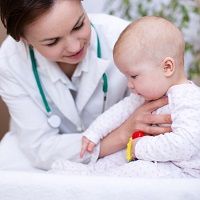Article
Early Antibiotic Use Impacts Child Development
Author(s):
More than 262 million courses of antibiotics were prescribed to outpatients in the US in 2011, translating to nearly 842 courses per 1,000 patients each year.
More than 262 million courses of antibiotics were prescribed to outpatients in the US in 2011, translating to nearly 842 courses per 1,000 patients each year.

According to a new study published in Nature Communications, administering multiple antibiotics during early childhood could lead to weight gain, increased bone growth, and altered gut bacteria.
Previous studies had often suggested the correlation between early antibiotic exposure and negative affects on a child’s health.
To further confirm existing hypotheses, Martin Blaser, MD, NYU Langone School of Medicine, NYU Langone Medical Center, and colleagues used a mouse model to mirror childhood antibiotic use. During their research, the team administered three short courses of common antibiotics (amoxicillin, tylosin, or a combination of the two) to a cohort of young, female mice.
The mice were given the same number of antibiotic prescriptions with the equivalent doses typically given to the average child in the first 2 years of life (prescription data shows that the average child in the US receives 3 antibiotic courses by age 2).
Compared with the control mice, the group given each of the three antibiotic treatments appeared to experience greater weight gain and larger bone development.
Additionally, both types of antibiotics were discovered to significantly interfere with the gut microbiome, altering the present bacterial species along with the genes linked to specific metabolic functions. “They changed the ecology of the microbiome in terms of the richness of the organisms, the diversity, and also what we call the community structure, or the nature of its composition,” said Blaser.
Furthermore, tylosin had a stronger impact on gut bacteria maturity than amoxicillin. The researchers noted the mice were incapable of easily adapting to environmental change, particularly when they were switched from a standard diet to a high-fat diet.
The team warned these results were specific to mice models rather than humans, so the implications of the modifications in gut bacteria are still unclear.
Regardless, the researchers concluded, “Because the antibiotics used represent the classes most widely prescribed to children, and that our findings were consistent with effects of early life sub-therapeutic antibiotic exposures, this new model extends hypotheses that early-life antibiotic exposures could have long-term developmental metabolic effects, as supported by animal models and human epidemiological studies.”




